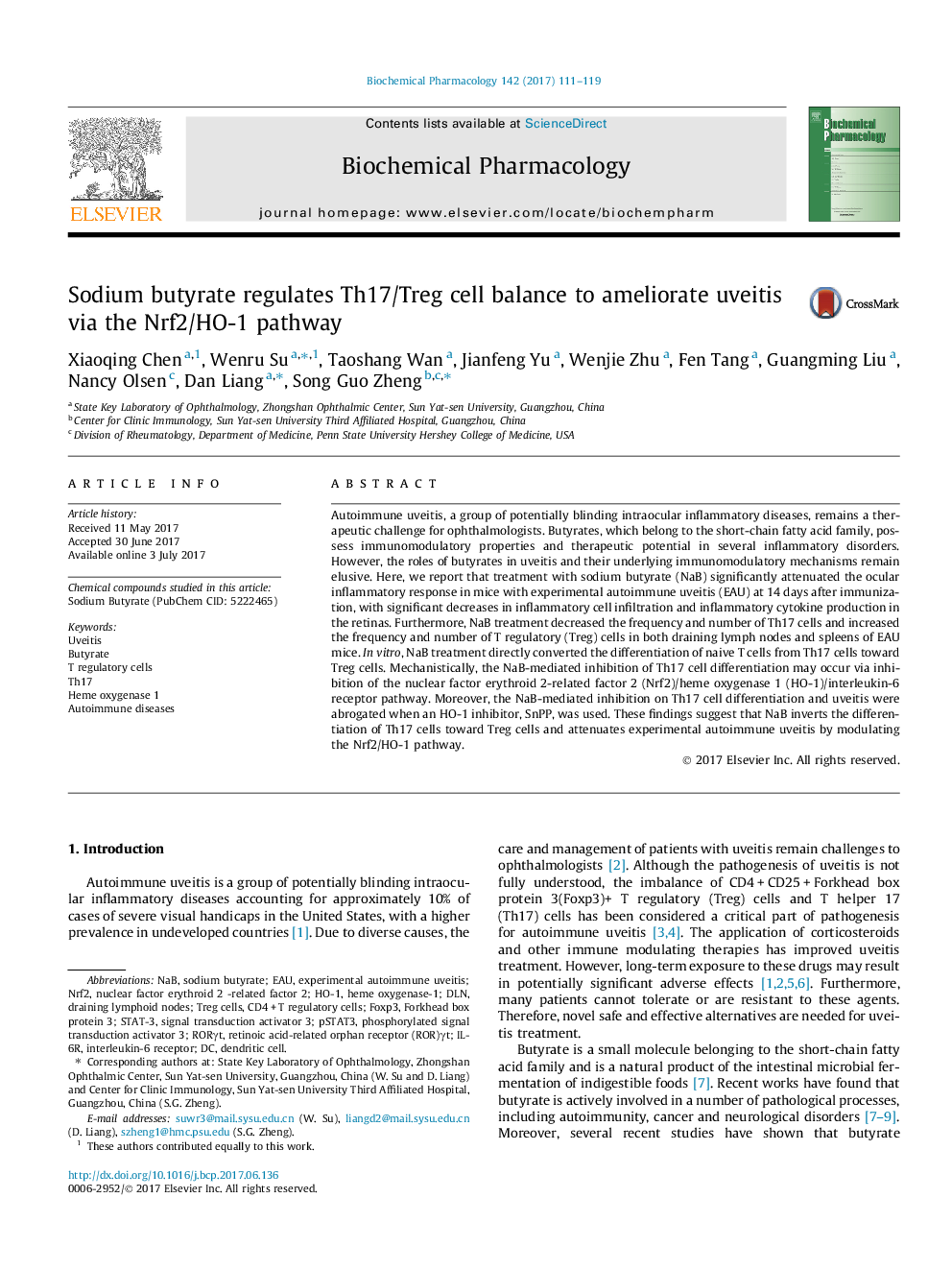| Article ID | Journal | Published Year | Pages | File Type |
|---|---|---|---|---|
| 5551988 | Biochemical Pharmacology | 2017 | 9 Pages |
Autoimmune uveitis, a group of potentially blinding intraocular inflammatory diseases, remains a therapeutic challenge for ophthalmologists. Butyrates, which belong to the short-chain fatty acid family, possess immunomodulatory properties and therapeutic potential in several inflammatory disorders. However, the roles of butyrates in uveitis and their underlying immunomodulatory mechanisms remain elusive. Here, we report that treatment with sodium butyrate (NaB) significantly attenuated the ocular inflammatory response in mice with experimental autoimmune uveitis (EAU) at 14Â days after immunization, with significant decreases in inflammatory cell infiltration and inflammatory cytokine production in the retinas. Furthermore, NaB treatment decreased the frequency and number of Th17 cells and increased the frequency and number of T regulatory (Treg) cells in both draining lymph nodes and spleens of EAU mice. In vitro, NaB treatment directly converted the differentiation of naive T cells from Th17 cells toward Treg cells. Mechanistically, the NaB-mediated inhibition of Th17 cell differentiation may occur via inhibition of the nuclear factor erythroid 2-related factor 2 (Nrf2)/heme oxygenase 1 (HO-1)/interleukin-6 receptor pathway. Moreover, the NaB-mediated inhibition on Th17 cell differentiation and uveitis were abrogated when an HO-1 inhibitor, SnPP, was used. These findings suggest that NaB inverts the differentiation of Th17 cells toward Treg cells and attenuates experimental autoimmune uveitis by modulating the Nrf2/HO-1 pathway.
Graphical abstractDownload high-res image (142KB)Download full-size image
